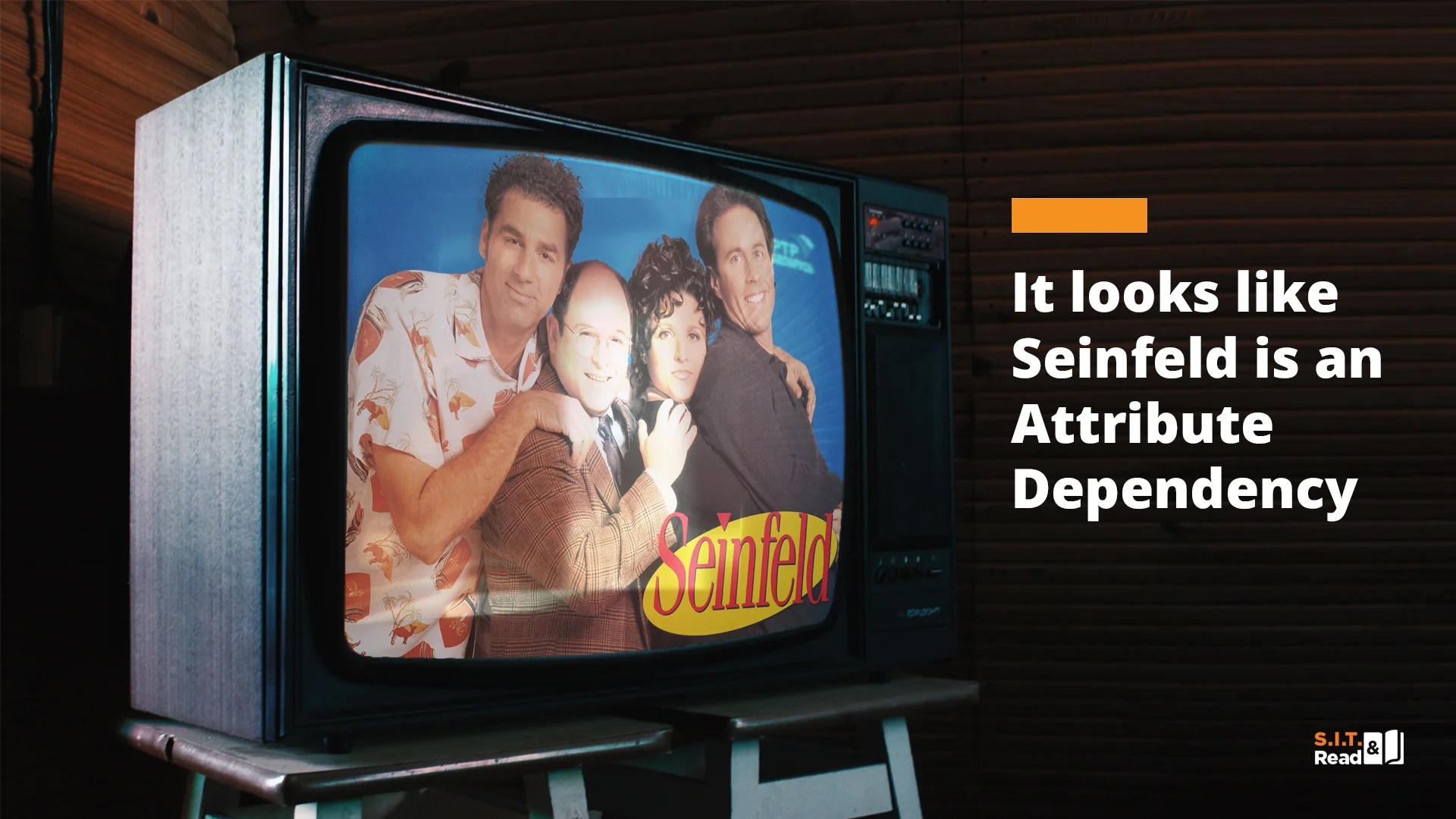Do you know this feeling, when you learn something new, and you suddenly recognize it around you everywhere?
We recently wrote here about how one can break “Relational Fixedness” using the thinking tool called Attribute Dependency. In the opening of the article, we used the following quote from the episode “The Chinese Restaurant” of the “Seinfeld” series, in which Elaine had a brilliant idea as to re-ordering the queue to the restaurant:
“You know, it’s not fair that people are seated first come – first serve. It should be based on who’s hungriest”
https://www.youtube.com/watch?v=nn9EYWG_fOI
Attribute Dependency, as explained, is about modifying existing relations (or dependencies) between the characteristics of a given system, product, or situation.
Soon after publishing this article, I discovered that in “The Old Man” episode, Jerry was using the same thinking tool to suggest a new speed limit guideline for elderly people:
“You know, I think old people should be allowed to drive their age. If you’re eighty, do eighty. If you’re a hundred, go a hundred. I mean, they can’t see where they’re going anyway. Let them have a little fun out there.”
Amazing! This suggestion is very similar to the optical retailer campaign mentioned in the previous article, according to which the number of percentage points of a discount is equal to the customer’s age.
I therefore realized that the writers of “Seinfeld” are aware of the creativity inherent in the Attribute Dependency tool. Their show may be about nothing, but they take it very seriously, so, I figured, there must be something to learn from it.
Although their main goal was the creation of comic situations and not necessarily the development of products or services of economic value and applicability – they perfectly demonstrate the power of the AD tool.
For the sake of research, I decided to binge on a few more episodes (or maybe I was just looking for an excuse to do so). Amazingly, I found quite a few additional examples of Attribute Dependency. Here are some of them.
In “The Pony Remark” episode, Jerry and Elaine arrive at a funeral, where they have a short discussion about the parameter that dictates the duration of the ceremony. Jerry expresses a rather surprising view:
Elaine: How long does a funeral take?
Jerry: Depends on how nice the person was. But you gotta figure, even Oswald took forty-five minutes.
And here is what Elaine suggests in “The Strongbox” episode. While talking to a friend, she states that in the case of executions, the last meal cuisine should depend on the method of execution:
Glenn: “You would choose your last meal based on the method of execution? “
Elaine: “Right. If I was getting the chair, I’d go for something hot and spicy. Thai, maybe Mexican. Lethal injection? feels like pasta – painless, don’t want anything too heavy.”
The creators of “Seinfeld” realize that Attribute Dependency can also be applied by disconnecting or eliminating an existing relation, and not just by creating a new one.
Jerry’s opening monologue of “The Jacket” episode is all about the future of clothing. He envisions that the single characteristic that will determine both the color and the shape of our clothes in the future will be the planet we came from.
I think eventually fashion won’t even exist. It won’t. I think eventually we’ll all be wearing the same thing. ’cause anytime I see a movie or a TV show where there’s people from the future of another planet, they’re all wearing the same thing. Somehow, they’ve decided, “This is going to be our outfit. One-piece silver jumpsuit, V-stripe, and boots.” That’s it. We should come up for an outfit for earth. An earth outfit.
https://www.youtube.com/watch?v=ceRsfMaQ4r0
The writers of the series even use this thinking tool to make fun of what people perceive as an existing relation between characteristics.
In “The Note” episode, Jerry grins at the “tell the doctor you know me” recommendation:
“Make sure that you tell him that, you know, you know me.” Why? What’s
the difference? He’s a doctor. What is it, “Oh, you know Bob! Okay, I’ll give
you the real medicine. Everybody else, I’m giving Tic-Tacs.”
Last (but not least funny) example uses some bad language but perfectly illustrates one cognitive advantage of creating a surprising new relationship between two characteristics of a system.
In “The Parking Garage” episode, Jerry humorously suggests replacing the numbers and colors of each floor in the parking garage of shopping malls with names that will allow them to be better remembered:
See, the problem with the mall garage, is that everything looks the same. They try to differentiate it. They put up different colors, different numbers, different letters. What they need to do is name the levels, like, “Your mother’s a whore.” You know what I mean? You would remember that. You would go, “I know. I remember, I’m parked in ‘My father’s an abusive alcoholic.’ I know where I’m parked.”
No doubt, innovating by using Attribute Dependency can be a lot of fun! Feel free to share with us your funny examples of applying this technique – surely some of them will not only be funny, but also valuable and applicable.
